Categories
Subjects
Authors
Artists
Venues
Locations
Calendar
Filter
Done
November 16, 2023 – Review
Lisa Tan’s “Dodge and/or Burn”
James Taylor-Foster
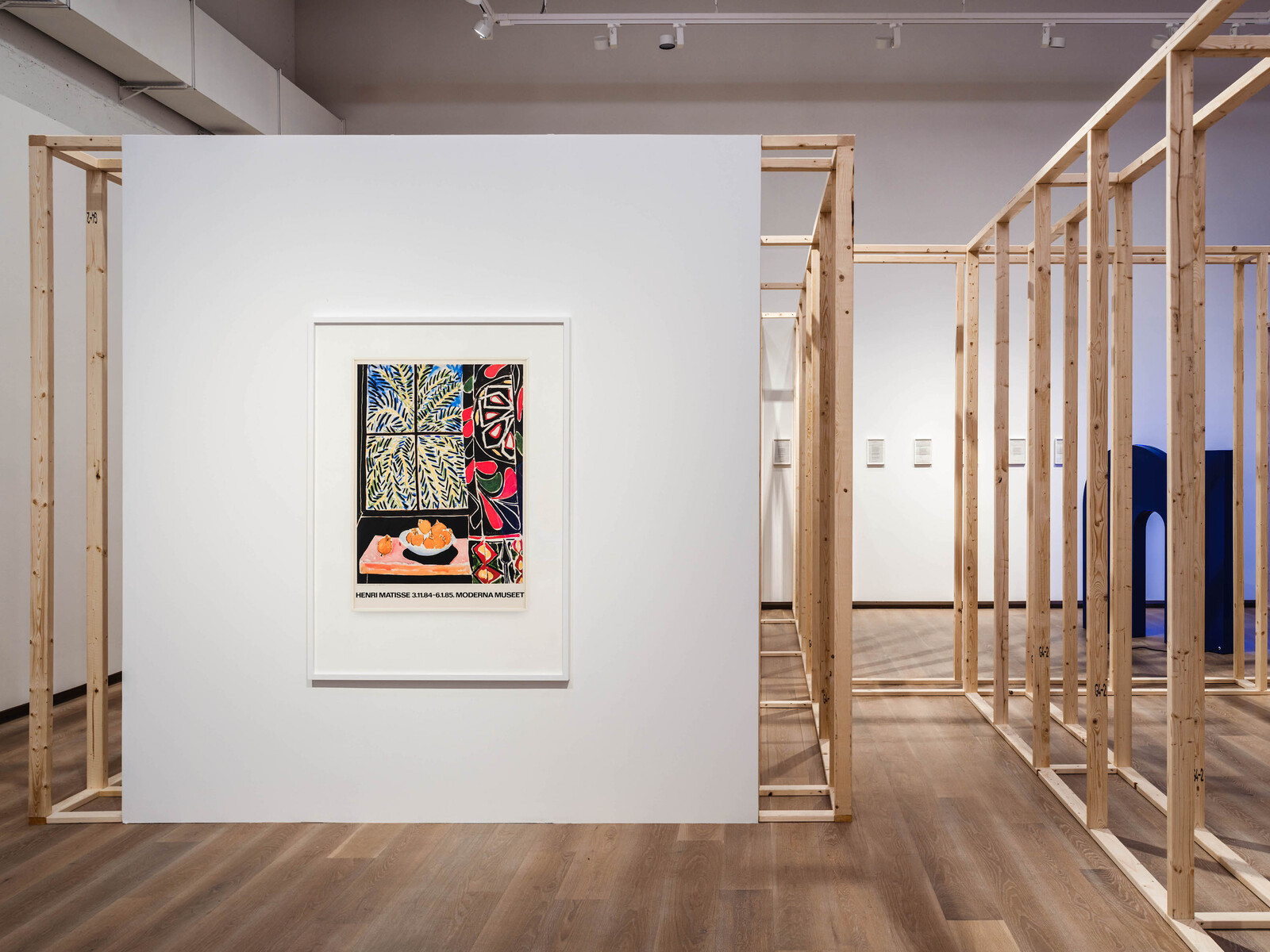
Slicing through subterranean exhibition halls that were previously university laboratories for research in accelerator physics, Lisa Tan’s first institutional show in Sweden tenders its own spatial logic through the metaphor of neurological disorders. Visitors are received by an ink-drawn diagram based on Oliver Sacks’s 1970 sketch of “migraine and neighboring disorders” (from a book said to have been written over just nine days, aided by an undisclosed psychoactive substance). Here, the diagram is superimposed on a detailed schematic of the galleries: I enter the exhibition through “protracted vegetative reactions.”
Tan treats Sacks’s diagram as a tool, scaling it up to a dizzying and dysfunctional domestic space by way of partial walls which operate as spatial dividers, passages, atmospheric zones, and display environments. Rhythmic and austere, this site-specific installation of previous works lays bare the delicate negotiation between control and collapse on which our lives depend. As an organizing principle, Promise or Threat (2023) reveals how rooms are diagrams that shape the ways in which we interface with the world. We move like ghosts, seen and unseen, between spaces that give form to the inner self: the anxiety of a family dinner, the pressure of a deadline, the monotony of a …
October 29, 2020 – Review
Runo Lagomarsino’s “I am also smoke”
Natasha Marie Llorens
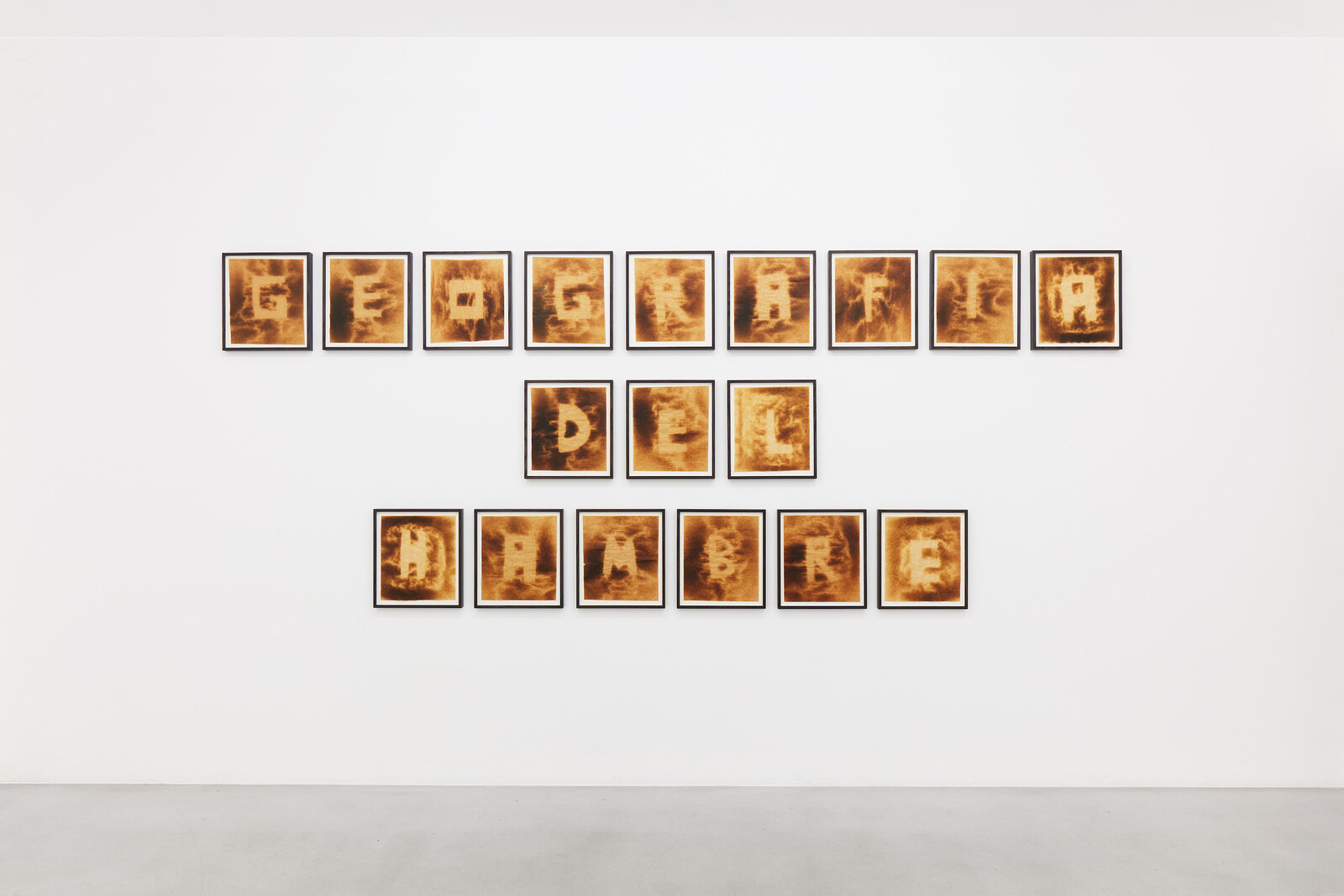
I vowed to quit smoking (again) in March. Then March happened and discipline of any kind seemed naïve in the face of global chaos that has undermined the assumption that we can control our own fate. Now it is October and we are in the middle of a second (third, twelfth) wave and Runo Lagomarsino’s solo exhibition at Galerie Nordenhake, “I am also smoke,” does nothing to renew my resolve. It is an ode to the liminality of moments spent with one’s addiction in the face of existential instability.
On one level I read “I am also smoke” as an ode to smoking because it is bookended in the space by works that directly involve cigarettes. The first sculpture one encounters upon entering—Air d’exil (we smoke for the dead, we store the dead, but they are not dead) (2019)—is a neat double row of Duchampian glass globes filled with smoke exhaled by Syrian asylum seekers. The last work in the show, Yo Tambien soy humo / I am also smoke (2020), is a video of the artist’s father relating the experience of his first cigarette on European soil after fleeing Argentina with his young family following the 1976 …
December 19, 2019 – Review
“Mud Muses: A Rant About Technology”
Frida Sandström
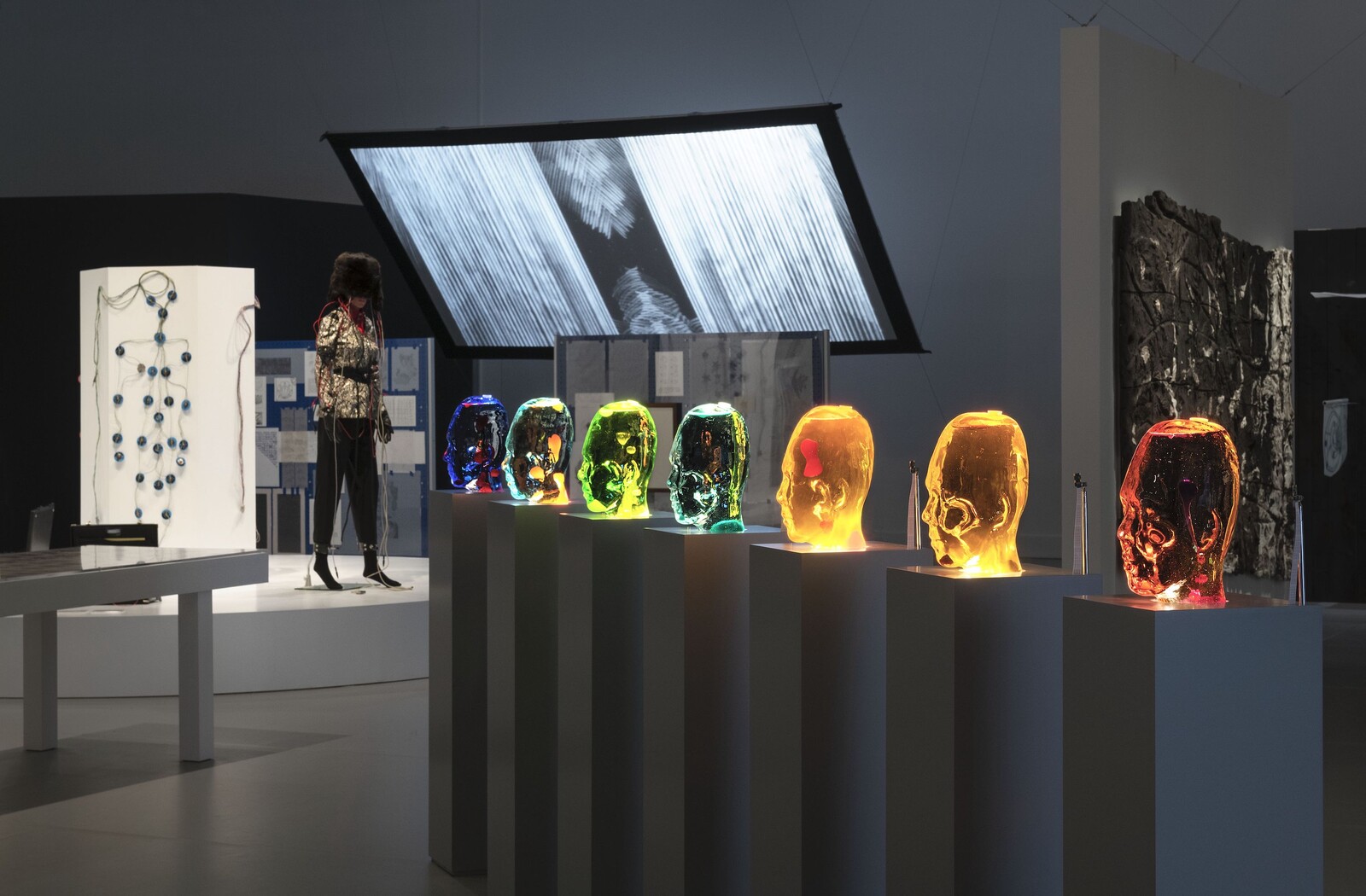
“If I don’t find what I want on the first page, I’ll usually just give up,” stated the American interface designer Aza Raskin in 2006. He later came to be known as the inventor of the infinite scroll—for which he recently publicly announced his regret. While Raskin’s interface dominates most digital media today, The Otolith Group’s Anathema (2011) brings us back to a distant time in the mid-2000s when the first iPhones hit the market. In an abstract montage of moving images from early YouTube, advertisement for touchscreen devices blend in pixelated abstraction, enabling a sublime imaginary of something beyond the responsive screens that we depend on. Much earlier, in the late 1970s and early ’80s, Swedish artist Charlotte Johannesson transferred weaving to the few pixels of Apple’s first home computers. This was before conventional printers, so Johannesson had to hack large-format architecture printers to get her colorful abstractions on paper.
The transition of ideas through matter has always been central to aesthetics. Ursula K. Le Guin has written that “technology is the active human interface with the material world”—it is the materialization of an interface that manifests each time we touch a screen, a stone, or each other. At …
June 12, 2019 – Feature
In conversation with Stockholm’s Mint
Frida Sandström
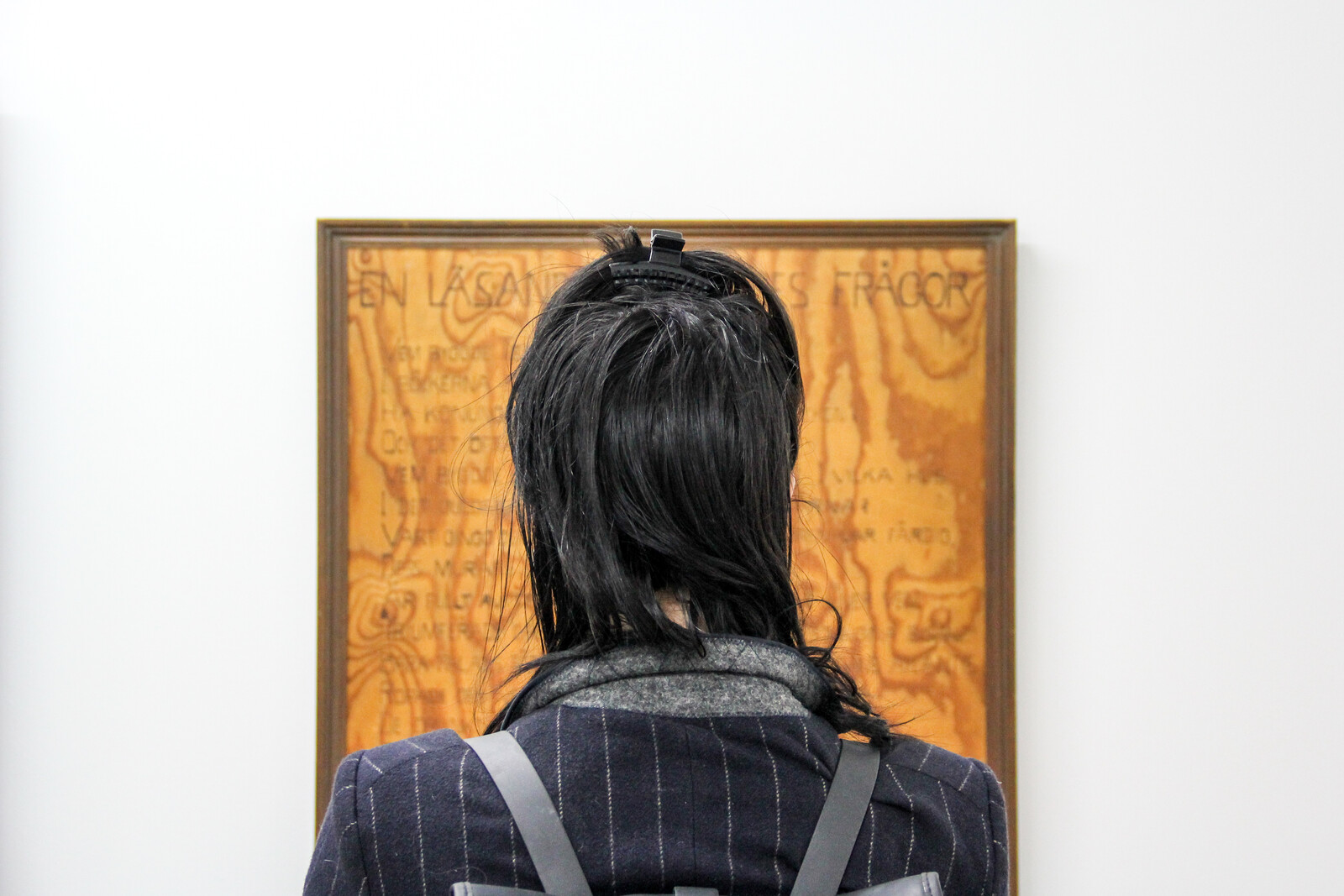
In 1939, the German artist Hans Tombrock (1895–1966) inscribed the words of his contemporary Bertolt Brecht’s 1935 poem “Questions From a Worker Who Reads” onto a wooden board. Both in exile from the Nazis, Brecht and Tombrock met in Stockholm earlier in 1939. They collaborated on several works and developed a longstanding dialogue on art in the workers’ movement, a set of riots and strikes at the turn of the twentieth century, and the institutionalization of the Swedish Trade Union Confederation, the Swedish Social Democratic Party (SAP), and social security. This spring, Tombrock’s piece, which borrows its title from Brecht’s poem, was exhibited in the group show “Den folkliga självstyrelsens livsluft” [The air which the autonomy of the people breathe] in Stockholm, alongside contemporary artworks that explore labor, exhaustion, and leisure. It was the first exhibition at Mint, a new non-profit art space in Stockholm founded and run by curators Emily Fahlén and Asrin Haidari. Last year, together with artist Thomas Hämén, Fahlén and Haidari curated the 2018 edition of the Luleå Biennial in northern Sweden. Titled “Tidal Ground,” the biennial critically investigated the local and global extraction of natural resources and workforces, alongside the role of art in antifascist …
April 5, 2018 – Review
Gerard Byrne’s “In Our Time”
Stefanie Hessler
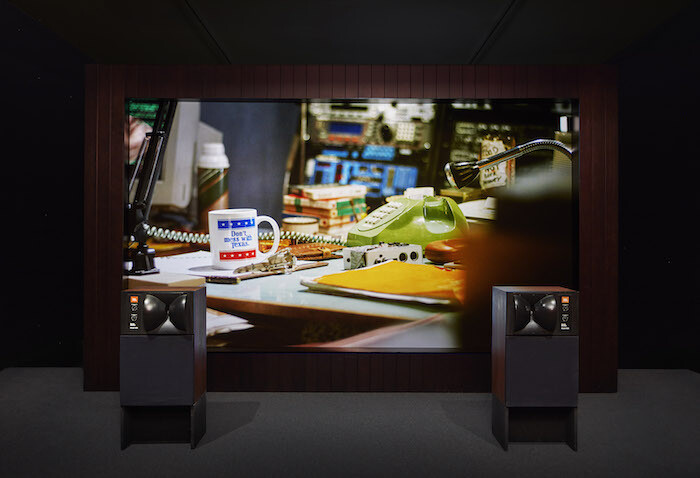
The year is 1977. Iggy Pop just released “The Passenger,” Eric Clapton mourns his son’s death in the 1990s-hit “Tears in Heaven,” and Ronald Reagan’s nuclear weapons build-up has the world holding its breath. Time is warped in Gerard Byrne’s seamless amalgamation of historical events, rock hits, and news reports from different years and political eras. With a hint of nostalgia and a subtle dose of humor, his film installation In Our Time (2017) takes us on a vortexed journey through the past, dodging monolithic history for ambiguity, conjuring an image distorted by our fallible memory and extending to inhabit the present.
Byrne is a master of reconstructions, of revisiting and restaging situations from recent history. In the three-channel video New Sexual Lifestyles (2003), he convened actors to appear on a panel that was originally published by Playboy in 1973 to debate “emerging behavior patterns, from open marriage to group sex.” The cameras circle around the cast, who impersonate figures such as the sex educator Betty Dodson, Deep Throat (1972) star Linda Lovelace, gay church founder Troy Perry, and Al Goldstein, editor of the pornographic weekly tabloid Screw. They speculate about a future that now lies in the past, though some …
February 20, 2018 – Review
Juan Downey’s “With Energy Beyond These Walls”
Axel Wieder
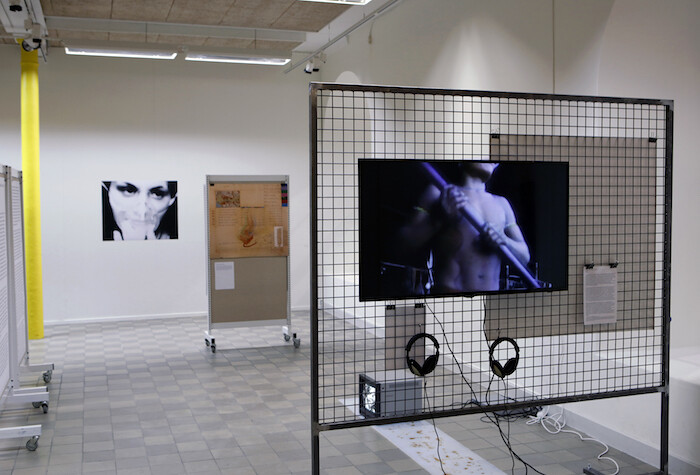
Juan Downey (1940–1993) has been recognized as an early pioneer of video art, but like many of his contemporaries, his interest was much broader than a single medium. Initially trained as an architect in Chile, where he was born, he traveled throughout Europe, meeting artists working with kinetics and interaction, such as Julio Le Parc and Takis. After moving to the US in the mid-1960s, he became a part of the discussion around the magazine Radical Software and associated groups that used early video technology to create alternative media channels. Downey’s own use of new technologies was often extremely speculative, exploring their potential to address and facilitate communication across space, between human and non-human participants, such as machines or plants. Presented in the Stockholm exhibition “With Energy Beyond These Walls” as a drawing, Three Way Communication by Light (1968–1972), for example, created a setup in which three participants in isolated rooms were filmed; the images of their faces, superimposed, were played back to the participants, engaging them in a loop of playful feedback. Downey saw electromagnetic signals, such as video or audio waves, as forms of “invisible architecture,” which create infrastructures. Invisible Energy in Chile Plays a Concert in New …
December 19, 2014 – Review
Ann Böttcher’s “Transmigrations (Bookshelves, a cannon emplacement and a Mercedes)”
Tyler Coburn
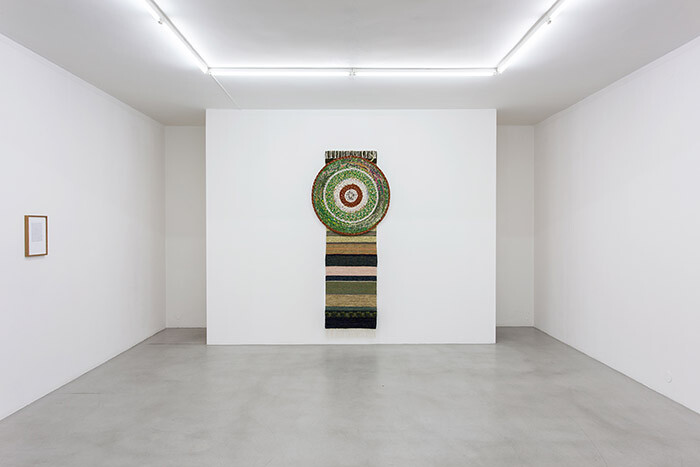
At one point in his 1960 book, Crowds and Power, Elias Canetti surveys “the symbology of nation states.” The English, he writes, see themselves as captains surrounded by sea; the Swiss are a single body linked beneath mountain peaks. Germans, in turn, assume symbolic form as an army, which Canetti calls a “marching forest.” “To this day,” he writes, the German “loves to go deep into the forest where his forefathers lived; he feels at one with the trees.” In such passages, Canetti not only maps landscape onto culture; he also implies how landscape can be molded to fit nationalist ends.
Swedish artist Ann Böttcher has spent years working through this implication. Her 2008 show at Galerie Nordenhake, in Berlin, directly referenced Walther Schoenichen, a German biologist and environmentalist who also served the Nazi Party as Director of the Reich Forest Ministry. Alongside photogravures of pages from Schoenichen’s 1934 book, Urwaldwildnis in deutschen Landen [German Primeval Wilderness] were delicate graphite renderings of pine trees that Böttcher likened to German soldiers (The Dürer Drawings (after Pine tree 1495-97), 2006–2008).
In “Transmigrations (Bookshelves, a cannon emplacement and a Mercedes),” Böttcher’s first solo show at Nordenhake’s Stockholm space, the artist continues this inquiry, now …
November 24, 2014 – Review
Eija-Liisa Ahtila’s “Studies on the Ecology of Drama 1”
Kim West
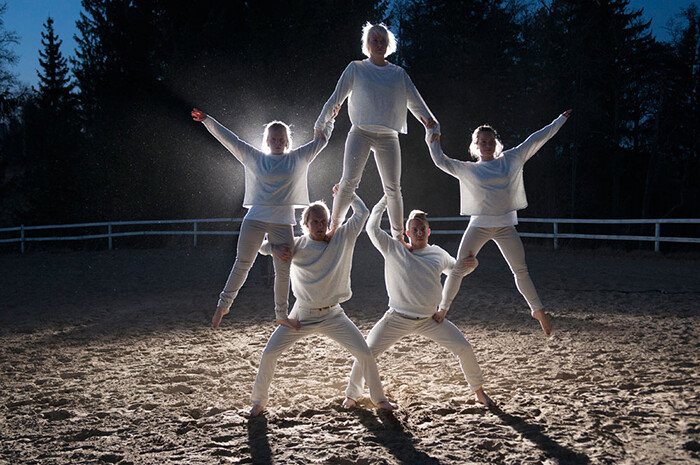
Human beings are destroying the planet. If we want to save it we must therefore make inhuman art. Arguments to this effect seem to have enjoyed some currency in recent curatorial practice. Alas, Eija-Liisa Ahtila’s accomplished video installation at Galleri Charlotte Lund in Stockholm does not save the world, nor does it wish to. But it confronts us with some of the critical insufficiencies that also haunt the credulous environmentalism of the “non-anthropocentric” contingent.
The single work on display in the gallery, Studies on the Ecology of Drama 1 (2014), is essentially a filmed lecture, projected on four screens surrounding the centrally placed spectator. Watching the film is necessarily a fragmented experience, since only two or, at most, three screens can be seen at once. The film, says the protagonist Kati, a Finnish actor who guides us through its 27 minutes, explores “the living and the representation of living things.” Its starting point is “the human-centered perspective of cinema” and the way its stories “focus on humans.” It presents “exercises for change,” playing with the thought that it could be possible to “see differently.”
The main adversary in Ahtila’s work is therefore the mainstream fiction film, as embodied physically and institutionally by …
April 26, 2013 – Review
Katarina Löfström
Jacquelyn Davis

In Katarina Löfström’s third solo exhibition at Andréhn-Schiptjenko, one is cajoled by both the comfort of repetition and sensory parameters related to any given reality. Perception, after all, is adaptable and even, at times, restrained. Human beings are able to train themselves to hone attractive skills and master talents through trial and error. Yet we are limited by the physical vessels we inherit, and hindered as our bodies deteriorate over time. As if in response to these constraints, Löfström focuses inward, embracing less circumscribed states—to begin the dialogue between “me” and “myself,” which Plato saw as the essence of thought.
When moving through the space, I found my breathing slowing down—I felt myself slowing down—as if the artist was inviting me to feel no shame in taking refuge in what is provided. Low, ambient sounds drone from the video A Void (2013), reminiscent of Robert Fripp & Brian Eno collaborations or soundtracks from sci-fi films such as Stanley Kubrick’s 2001: A Space Odyssey (1968), minus the paranoia. When viewing Löfström’s consciousness-expanding collage works (on view alongside the video), no text is displayed in association or clarification and no parameters are defined, persuading one to develop a language based solely upon images. …
